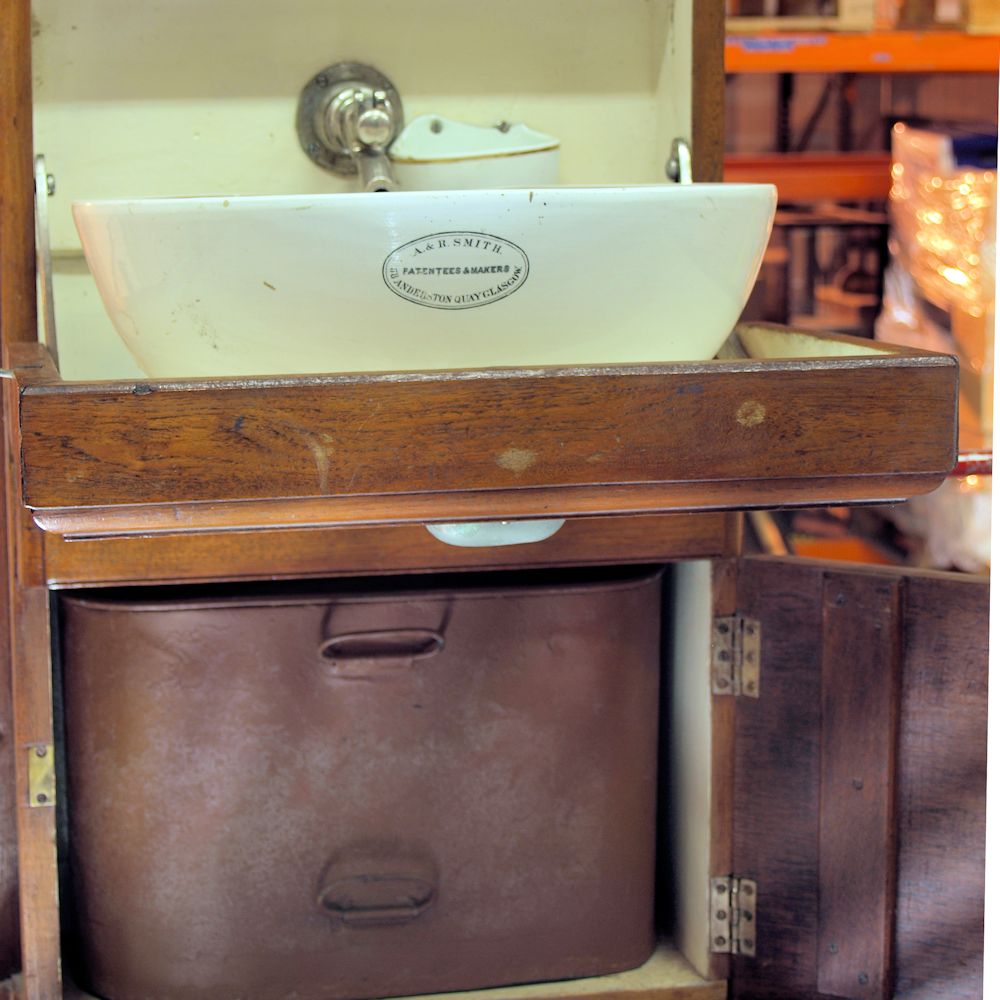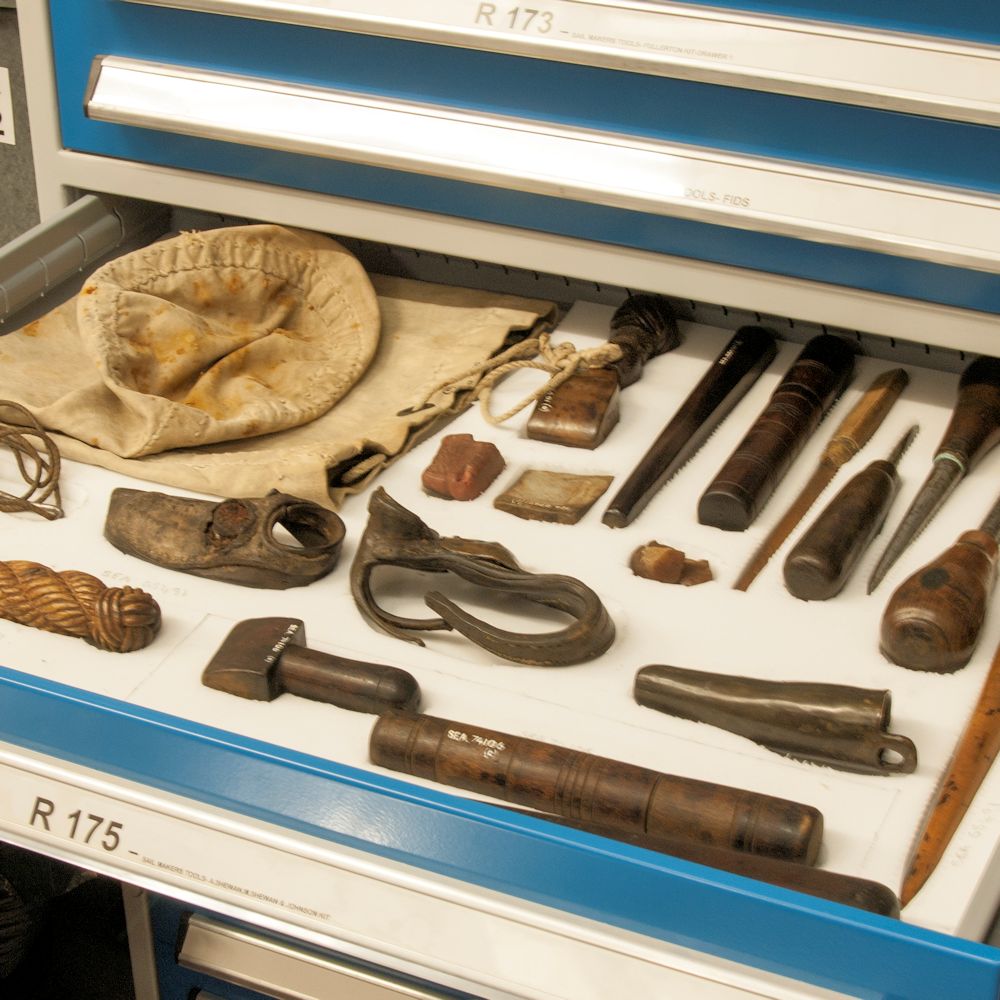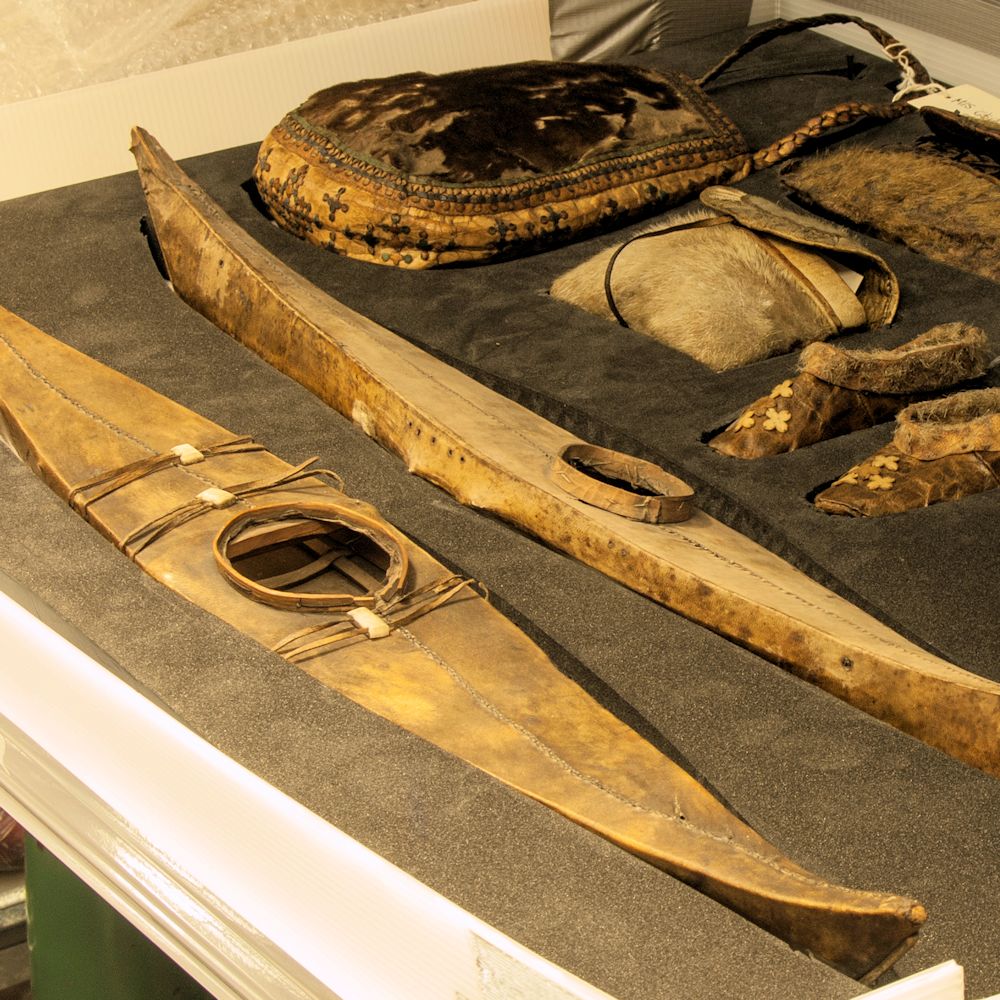Maritime
Britain’s merchant fleet was once the world’s largest, and for 150 years it was vital to Shetland’s economy because seamen supported their families with wages from the sea. The Museum collection encompasses islanders’ worldwide voyaging, with tools of their trade and souvenirs taken home.
The collection is strongest from the classic era of sailing ships in the 19th century that were both romantic and dangerous. Most objects are mariners’ own tools, such as sailmaking equipment. Many Shetlanders became ship masters and the museum has sextants, telescopes and charts that they would have used every day. One of the largest maritime sectors around 1820-90 was the Arctic whaling, and we have harpoons and other apparatus used for whaling and sealing.
Long sea passages allowed men time to create beautiful craft items by carving and ropework, and there are several examples in the collection. Often, seamen obtained souvenirs from people in foreign lands, and we have things taken back from the Arctic, the Orient and South America.
Maritime services in Shetland have allowed safe navigation, and saved lives where shipwrecks occurred. We have machinery from lighthouses, and coastguard apparatus which was used to hoist people from ship to shore. A diverse range of debris is found on beaches after wrecks, including nameboards, figureheads, lifebelts and furniture, and we hold examples of all of these.
 View Full Size
View Full Size View Full Size
View Full Size View Full Size
View Full Size